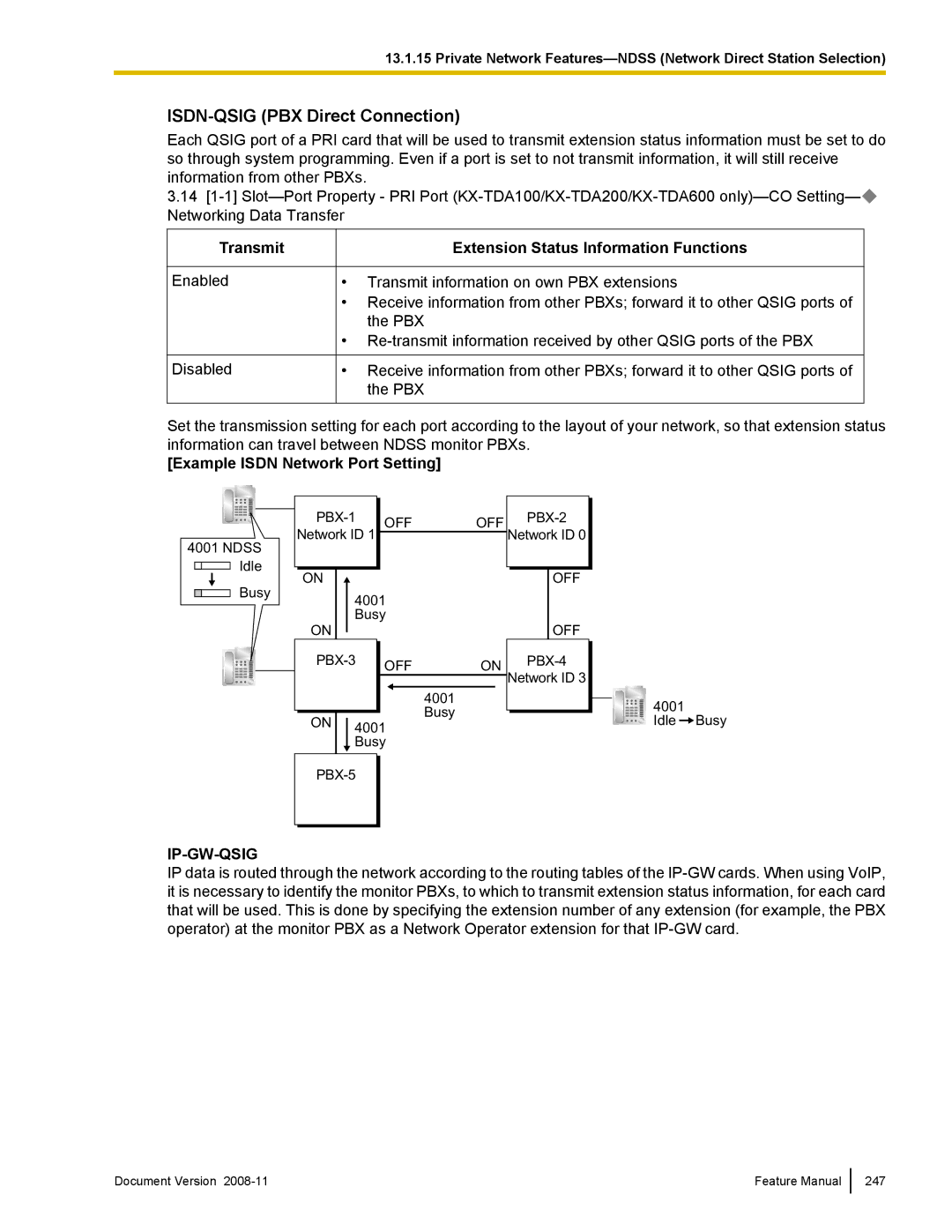
13.1.15 Private Network
ISDN-QSIG (PBX Direct Connection)
Each QSIG port of a PRI card that will be used to transmit extension status information must be set to do so through system programming. Even if a port is set to not transmit information, it will still receive information from other PBXs.
3.14![]() Networking Data Transfer
Networking Data Transfer
Transmit
Enabled
Disabled
Extension Status Information Functions
•Transmit information on own PBX extensions
•Receive information from other PBXs; forward it to other QSIG ports of the PBX
•
•Receive information from other PBXs; forward it to other QSIG ports of the PBX
Set the transmission setting for each port according to the layout of your network, so that extension status information can travel between NDSS monitor PBXs.
[Example ISDN Network Port Setting]
4001 NDSS ![]() Idle
Idle
Busy
|
| OFF | OFF | |
|
| |||
| Network ID 1 |
| ||
|
|
|
| |
|
|
|
|
|
ON
4001 Busy
ON
Network ID 0
OFF
OFF
OFF | ON | ||
| Network ID 3 | ||
|
|
| |
|
| 4001 |
|
|
| Busy |
|
ON | 4001 |
| |
| Busy |
4001
Idle ![]() Busy
Busy
IP-GW-QSIG
IP data is routed through the network according to the routing tables of the
Document Version | Feature Manual |
247
